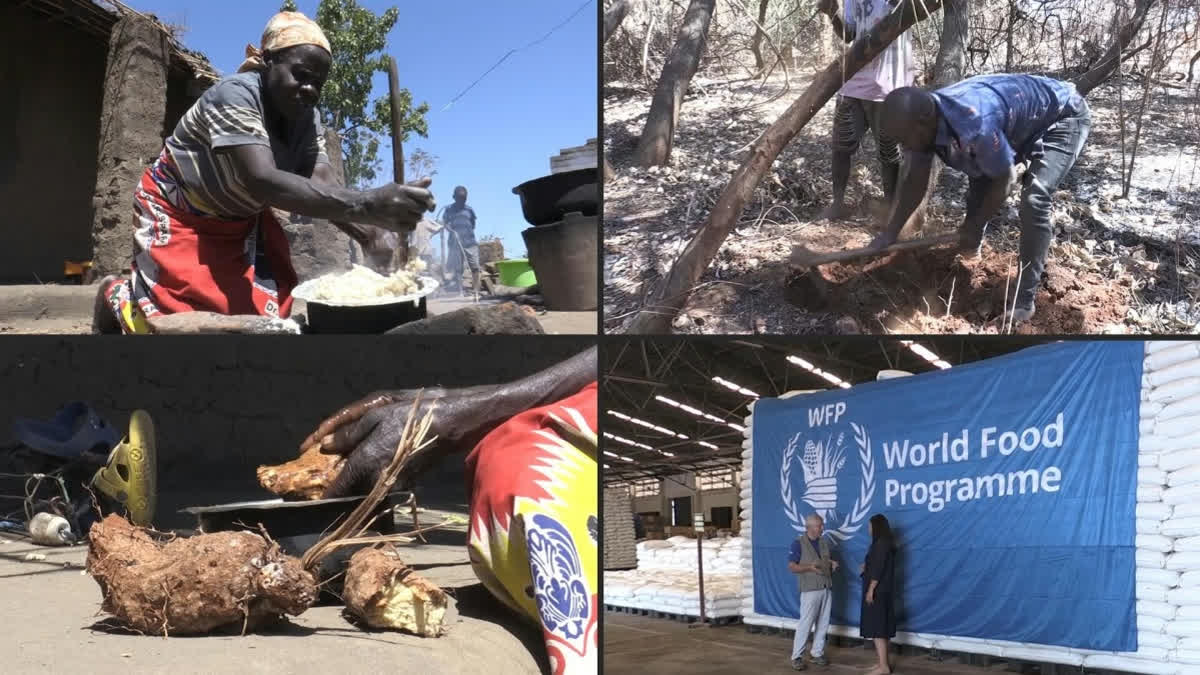Salima (Malawi):In the worst drought in southern Africa in a century, villagers in Malawi are digging for potentially poisonous wild yams to eat as their crops lie scorched in the fields. "Our situation is very dire; we are starving," said 76-year-old grandmother Manesi Levison as she watched over a pot of bitter, orange wild yams that she says must cook for eight hours to remove the toxins.
"Sometimes the kids go for two days without any food," she said. Levison has 30 grandchildren under her care. Ten are huddled under the thatched roof of her home at Salima, near Lake Malawi, while she boils up the unpalatable yams known locally as mpama. "It is a root that grows in the wild which we dig up so that the kids can at least have something to eat for the day," Levison said.
"People have died or fallen sick from eating this, so you have to make sure that it cooks for a really long time, all the time replacing the cooking water so as to remove the poison." The rains stopped in this part of Malawi in April and the crops burnt in the fields, Levison said.
The next harvest is due in March, said the headman of the village of 1,000 people about 80 kilometres (50 miles) northeast of the capital Lilongwe. "People here are distressed because of hunger and the situation is really desperate," Samuel Benjamin said.
- Dependent on rain -
Malawi is one of the world's poorest countries and most of its people depend on rain-fed agriculture for food. This year's drought, exacerbated by the El Nino weather phenomenon, is affecting 44 percent of Malawi's crop area and up to 40 percent of its population of 20.4 million, the World Food Programme (WFP) has said.
About 5.7 million people will need help to get enough to eat between October and March, according to Malawi's Department of Disaster Management Affairs. The situation is equally dire around 250 kilometres south of Salima in the Chikwawa area, near the commercial capital Blantyre.
